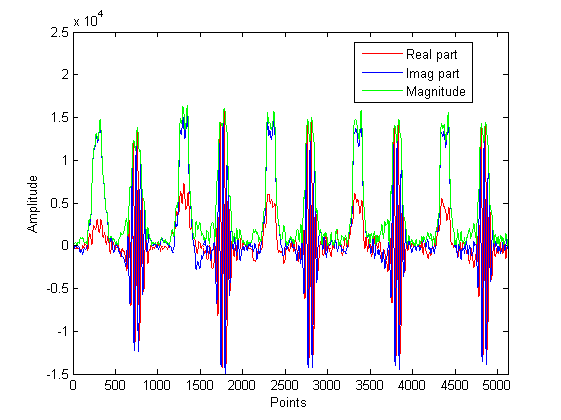Multi-frequency Pulse Theory and Applications (Transient Bloch-Siegert Shift Revisited)
- ABQMR, Albuquerque, United States
Multi−frequency pulse means that a sequence contains more than one frequency RF pulses. The multi−frequency measurements have important potential applications enhancing SNR in a gradient field: T1 & T2 measurement in gradient field; obtaining B1 mapping in gradient field; applied in flowing measurement, etc. Emsley and Bodenhausen[1] firstly brought up the concept of transient Bloch−Siegert shift in 1990. Sacolick, et al.[2] provided the calculation method for phase shift, and applied the Fermi pulse with offset frequency ±4kHz to obtain B1 mapping. Mandal, et al.[3] presented multi−slice CPMG pulse sequence and showed the experiment data with two slices. In order to better utilize the transient Bloch−Siegert shift, the theory and applications for dual frequencies pulse were researched based on 1 Tesla magnet and MRT (MRTechnology, Japan) control system.
Figure 1 shows the first five echoes with dual slice CPMG sequence. The frequency in the first slice is on resonance, while the offset frequency in the other slice is 20 kHz. The verification experiments confirm how offset pulses shift the signal phase. It also shows: for homogeneous media, data from different slices can be added to improve SNR; for inhomogeneous media, multi−frequency measurements can distinguish the properties in different slices more quickly.

- [1] L.Emsley, G.Bodenhausen, (1990), Phase shifts induced by transient Bloch-Siegert effects in NMR, Chem. Phys. Lett., 297-303, 168
- [2] L. I. Sacolick, F. Wiesinger, I. Hancu, M. W. Vogel, (2010), B1 mapping by Bloch-Siegert shift, Magn. Reson. Med., 1315-1322, 63
- [3] S. Mandal, S. Utsuzawa, D. G. Cory, M.Hürlimann, M. Poitzsch, Y. Q. Song, (2014), An ultra-broadband low-frequency magnetic resonance system, J. Magn. Reson., 113-125, 242
